Filter by

A Greek Grammar Accidence and Syntax for Schools and Colleges
John Thompson (c.1866–1936) was Classics master and headmaster (1908–27) at the prestigious High School, Dublin. A competent linguist, he translated from German, produced a Latin primer, and wrote a Sanskrit course, though he opposed the teaching of Irish. He became a Member of the Royal Irish Academy (1912), President of the Classical Association (1918) and was appointed Officier d'Académ…
- Edition
- -
- ISBN/ISSN
- 9781139333825
- Collation
- -
- Series Title
- Cambridge Library Collection - Classics
- Call Number
- -
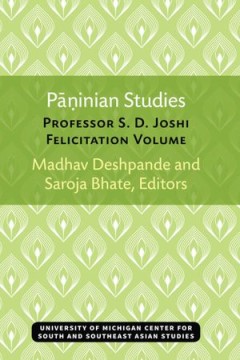
Paninian Studies: Professor S. D. Joshi Felicitation Volume
Pa?ini’s grammar is the oldest surviving grammar of Sanskrit, dating back to the fifth century BCE. In its completeness of coverage of linguistic elements and its theoretical and analytical sophistication, Pa?ini’s grammar is surprisingly modern. It has long provided inspiration for many ideas in modern linguistics, and continues to attract scholars’ attention in the fields of Sanskrit an…
- Edition
- -
- ISBN/ISSN
- 9780472901692
- Collation
- -
- Series Title
- -
- Call Number
- 491.2 PAN p
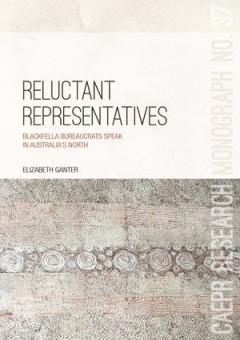
Reluctant Representatives: Blackfella bureaucrats speak in Australia’s north
How can you make decisions about Aboriginal people when you can’t even talk to the people you’ve got here that are blackfellas?’ So ‘Sarah’, a senior Aboriginal public servant, imagines a conversation with the Northern Territory Public Service. Her question suggests tensions for Aboriginal and Torres Strait Islanders who have accepted the long-standing invitation to join the ranks of …
- Edition
- -
- ISBN/ISSN
- 9781760460327
- Collation
- -
- Series Title
- -
- Call Number
- 420 GAN r
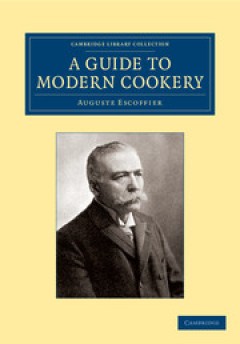
A Guide to Modern Cookery
The late nineteenth and early twentieth centuries witnessed a revolution in the eating habits of European households with disposable incomes. Central to the culinary history of the period is the innovative French chef Georges Auguste Escoffier (1846–1935). His cooking methods, combined with a modern approach to managing professional kitchen staff, contributed to the development of a fashionab…
- Edition
- -
- ISBN/ISSN
- 9781139626637
- Collation
- -
- Series Title
- Cambridge Library Collection - European History
- Call Number
- -

A Grammar of the Mahratta Language To Which Are Added Dialogues on Familiar …
Marathi, an official language of Maharashtra and Goa, is among the twenty most widely spoken languages in the world. The southernmost Indo-Aryan language, it is also spoken in Gujarat, Madhya Pradesh, Karnataka, and Daman and Diu, and is believed to be over 1,300 years old, with its origins in Sanskrit. First published in 1805, this grammar of Marathi (then known as Mahratta) was compiled by th…
- Edition
- Ed. 1
- ISBN/ISSN
- 9781139519847
- Collation
- -
- Series Title
- -
- Call Number
- -

Approaches to Qualitative Research in Mathematics Education: Examples of Meth…
This volume documents a range of qualitative research approaches emerged within mathematics education over the last three decades, whilst at the same time revealing their underlying methodologies. Continuing the discussion as begun in the two 2003 ZDM issues dedicated to qualitative empirical methods, this book presents astate of the art overview on qualitative research in mathematics education…
- Edition
- Ed. 1
- ISBN/ISSN
- 978-94-017-9181-6
- Collation
- XV, 592
- Series Title
- Advances in Mathematics Education
- Call Number
- 510 APP a
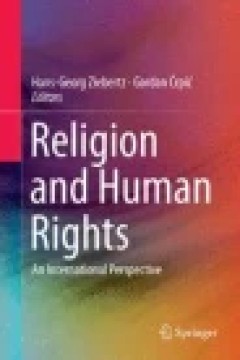
Religion and Human Rights
This book examines the relationship between human rights and religiosity. It discusses whether the impact of religiosity on human rights is liberational or suppressive, and sheds light on the direction in which the relationship between religion and human rights is expected to develop. The questions explored in this volume are: Which are the rights that are currently debated or under pressure? W…
- Edition
- -
- ISBN/ISSN
- -
- Collation
- -
- Series Title
- -
- Call Number
- -

A Guide to the Geography of Pliny the Elder
This is the first thorough English commentary on the geographical books of Pliny the Elder, written in the AD 70s. Pliny's account is the longest in Latin, and represents the geographical knowledge of that era, when the Roman Empire was the dominant force in the Mediterranean world. The work serves both cultural and ideological functions: much of it is topographical, but it also demonstrates th…
- Edition
- -
- ISBN/ISSN
- 9781108693660
- Collation
- -
- Series Title
- -
- Call Number
- -
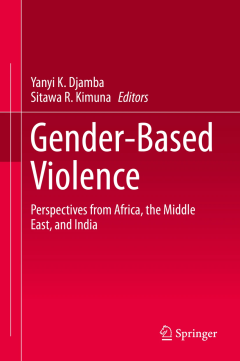
Gender-Based Violence: Perspectives from Africa, the Middle East, and India
This book offers new perspectives on gender-based violence in three regions where the subject has been taboo in everyday discourse often due to patriarchal cultural norms that limit women’s autonomy. The contributions to this book provide rare insight into not only the levels and the socio-demographic determinants of domestic violence, but topics ranging from men’s attitudes toward wife bea…
- Edition
- 1
- ISBN/ISSN
- 978-3-319-16669-8
- Collation
- XIX, 243
- Series Title
- -
- Call Number
- 177.5

Constructing Virtue and Vice; Femininity and Laughter in Courtly Society (ca.…
The study examines textual representations of women’s laughter and smiling and their imagined connection to female virtue in a wide variety of discourses and contexts of the German Middle Ages, including medieval epic, ecclesiastical texts, conduct literature, lyric, and sculpture
- Edition
- 5
- ISBN/ISSN
- 9783737001199
- Collation
- -
- Series Title
- -
- Call Number
- 179.9 TRO c
 Computer Science, Information & General Works
Computer Science, Information & General Works  Philosophy & Psychology
Philosophy & Psychology  Religion
Religion  Social Sciences
Social Sciences  Language
Language  Pure Science
Pure Science  Applied Sciences
Applied Sciences  Art & Recreation
Art & Recreation  Literature
Literature  History & Geography
History & Geography